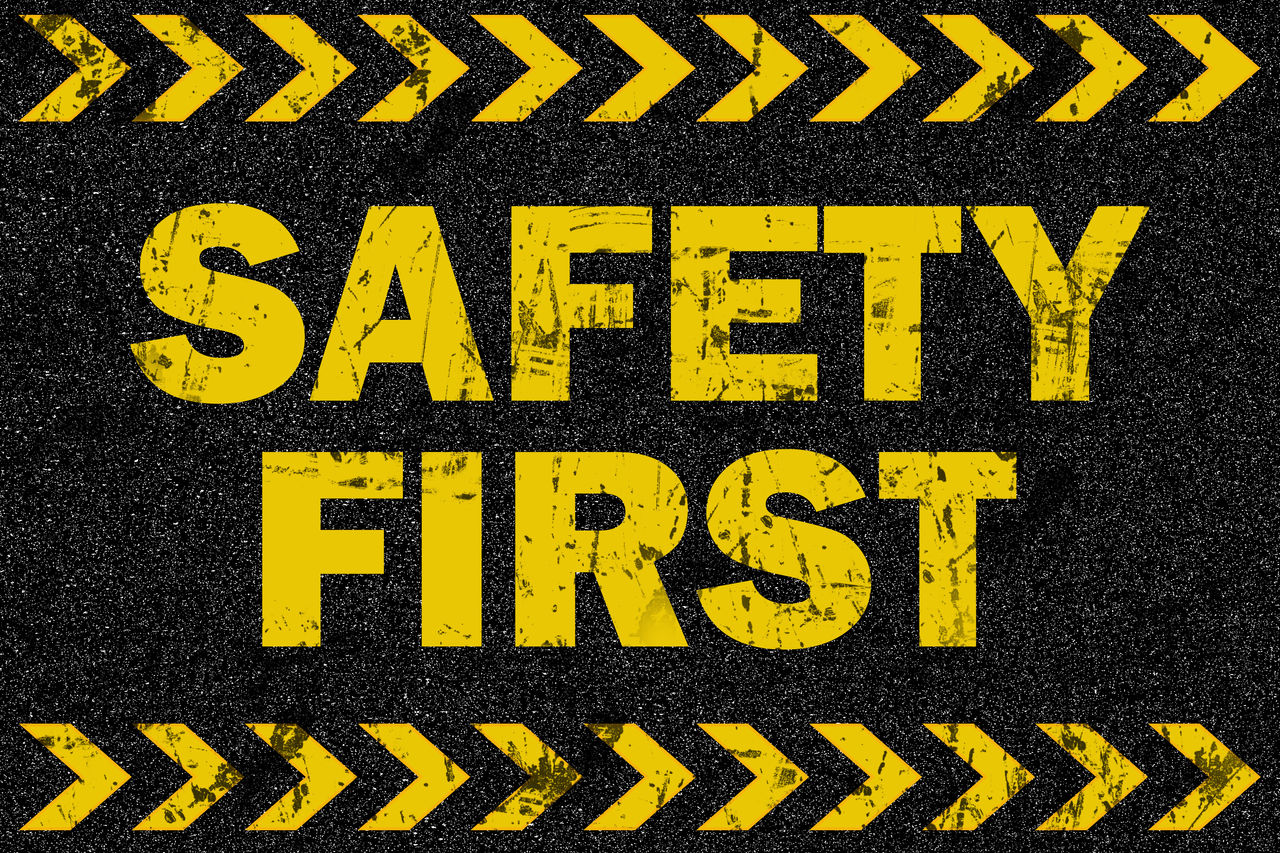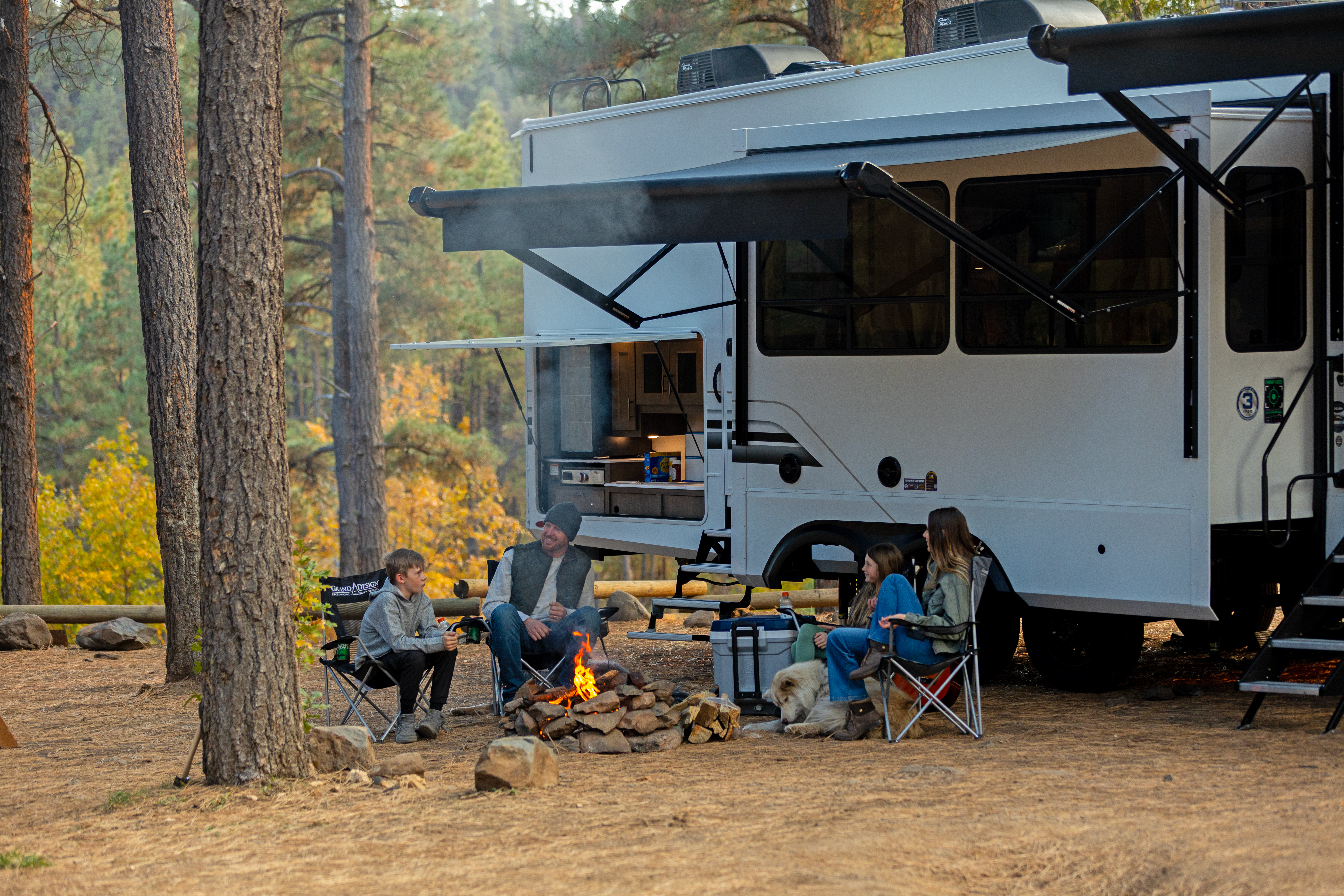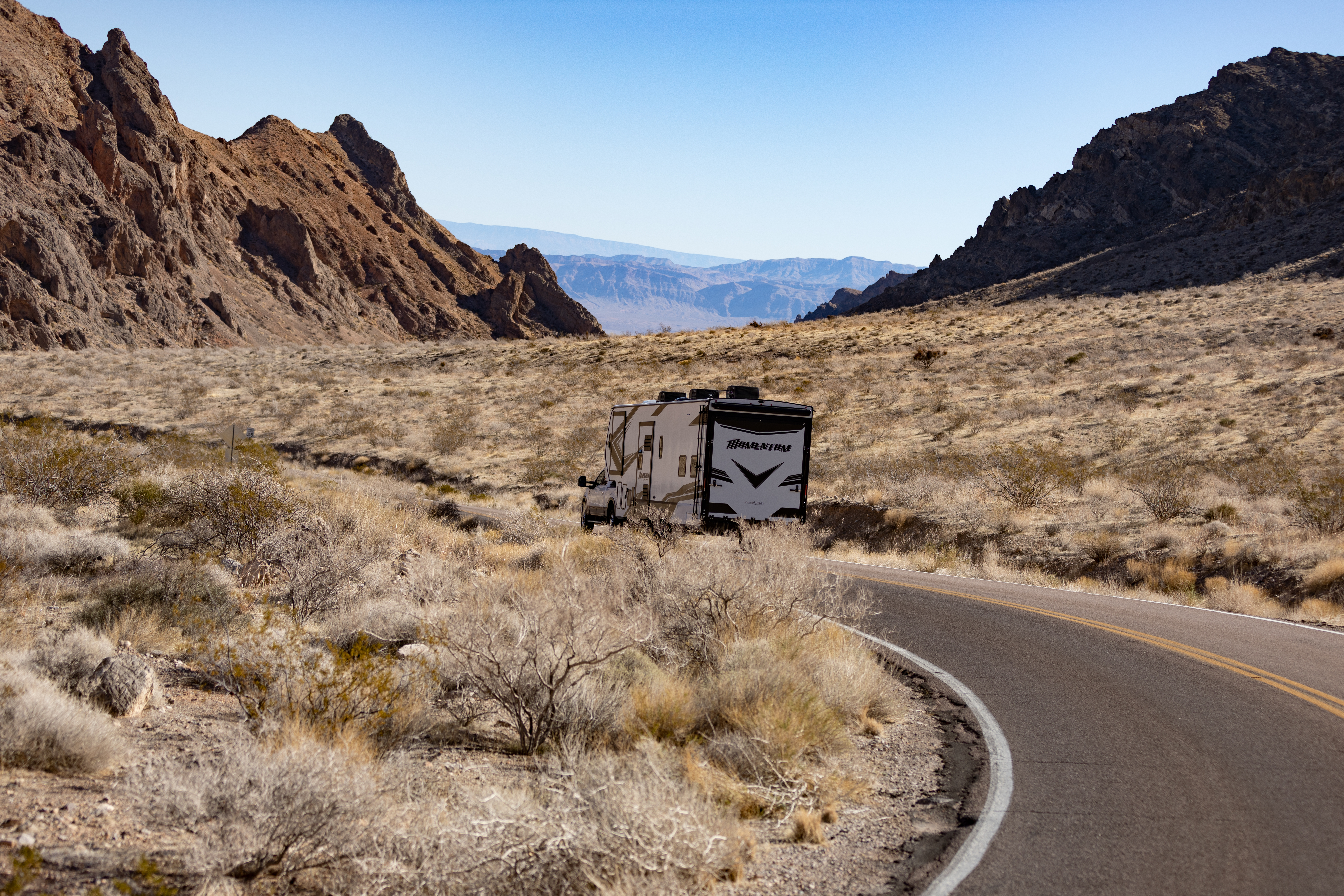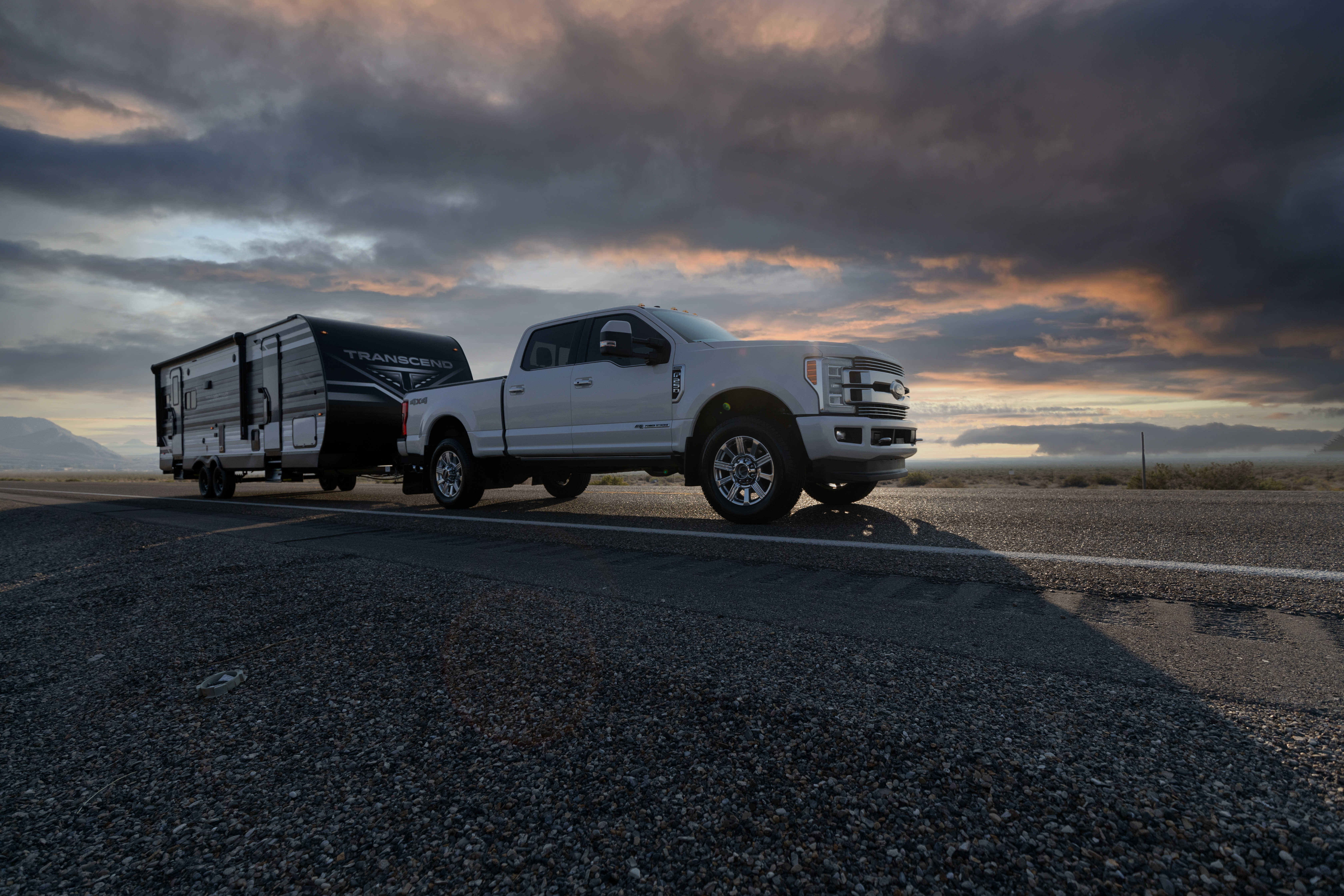LEARN
Top 10 RV Towing Tips: Tow Your RV with Confidence

Top 10 Tips For Towing
What to know before you tow
When we buy our RV, we typically consider where we are going, who we are going with, and what we can afford as key criteria. We look forward to where the RV can take us and what we can do there…sometimes overlooking how to get there in good time and safely.
All RVers agree that the most stressful part of our trips is usually the journey, not the destination. Towing can be difficult, especially if you don’t have hours of experience towing your specific unit.
But whether you are an experienced RV driver or a novice, these top ten towing tips can help you prepare for your trip, drive safely and confidently to your destination, and hook up so the fun can begin.
Before You Tow
1. Make sure the weight adds up
Before you tow anything (and before you purchase an RV to begin with), you need to know your vehicle’s tow capacity. This is simply how much weight your vehicle can tow.
If you don’t know this information off the top of your head, take a look at the sticker on your driver's side door frame. The rating displayed on the sticker should determine what kind of RV you can safely tow.
The next thing you need to know is the weight of your RV. These two numbers are critical for helping you determine how large your RV can be as well as the things you need to be aware of while towing it. Remember to add the weight of everything you load into your RV as well as the “dry” weight. And don’t overload the RV.
Make sure you have plenty of margin for error, so your vehicle isn’t straining to climb steeper hills or overwhelmed by braking coming down them.
A heavier RV could increase your stopping distance. If you don’t take these things into account, not only will you be unsafe on the road, but the probability of damage to your vehicle or RV also increases.
When you buy a new or used RV from a dealer, they will have helped you work out your towing capacity. If you buy one privately, make sure to have your weights checked and checked again.
2. Get hitched right
Before you tow your trailer for the first time, it is imperative that you learn the proper technique for hitching and unhitching an RV. This will vary depending on the RV you have and your type of hitch. Failing to learn how to do this correctly will result in damage to your car or truck and possible injury to you, your passengers or other innocent drivers) on the road.
Have your Grand Design RV dealer walk you through the process of both hitching and unhitching. Take thorough notes so you have a checklist on hand for all future trips. You can also check this video from GDRV TV for more information or read our itching guide here.
3. Get in some practice swings
Remember the first time you drove a car? You were probably taken for a few swings after-hours around a local school, or office parking lot. If you have never driven with an RV in tow, or perhaps just haven’t driven with your particular RV, it’s time to channel your inner fifteen year-old, only without the nervous parent flinching in the passenger seat.
Taking your new rig to an empty parking lot and setting yourself the challenge to maneuver it in and out of parking spots and feeling the cornering will calm your nerves, give you the confidence to drive longer distances, and help you get a better feel for how your vehicle maneuvers with your RV hitched to it.
Every RV is different. Even if you have towed one or several RVs before, if you haven’t driven the one in question, you’ll need to get your bearings. After all, it is your responsibility to know how to drive safely while towing an RV.
Lower the stakes by practicing before getting on the road so that you don’t endanger other people or yourself…or risk embarrassment when you try to reverse into that difficult spot at the camp ground.
4. Pack light…and load the hitch
When it comes to trip planning, Less is definitely more.
Newbies often pack for every imaginable scenario. What if you want waffles instead of pancakes one morning? Better pack the waffle maker, just in case. Don’t forget the food processor, either, because there’s nothing like fresh salsa and chips while camping. Don’t fall victim to this pitfall. Pack only what you will absolutely need, and keep your list light and lean, so you can keep the towing a dream.
Bear in mind it’s not just how much you pack that will impact your towing safety. It’s also the way you distribute the weight inside the RV. A good rule of thumb is to have equal weight on each side of the RV and a bit more concentrated on the hitch. Having more weight on the hitch side will reward you with a steadier tow. Too much weight in the back will cause your RV to sway and give you less control.
Here's a helpful video made by U-haul that demonstrates what can happen if you put too much weight at the back of your RV. It’s almost impossible to retrieve a vehicle once sway gets a hold.
Pack light, pack even and load the hitch.
5. Plan your route to avoid nasty surprises
There’s no worse feeling than traveling 50 or 100 miles down a route only to find a low bridge, or narrow path that stops you in your tracks. Or to arrive at a high suspension bridge only too find high winds making the crossing treacherous.
When this happens the temptation to rush back and find another route and make up time can lead to any number of towing catastrophes.
Researching every mile of the way to your campground will notify you of any potential hazards like low bridges, narrow roads, and tight turns so you can choose a new route accordingly.
Always play it safe, as diligent planning will save time in the end.
Watch the weather like a sailor.
Just as sailors obsess about the weather for the full duration of their trip, so should you. High winds, rain, hail, and snow can all make a seemingly simple journey a hair-raising rollercoaster ride. That benign mountain road can become a regular death trap if the weather turns against you.
Allow the weather to determine when you go and the route you take and be prepared to hunker down when it’s not safe to drive.
6 . Widen your (rear) view
A small but important accessory for every trip is a pair of extended side mirrors.
When you are towing an RV, your regular side mirrors aren’t going to give you the visibility you need to drive safely. With the length of your vehicle extended, there are blind spots that standard side mirrors cannot see.
The most common solution to this problem is to purchase extended side-view mirrors.
Either permanent ones or clip-ons are available, depending on your needs. If you only use your vehicle for towing, permanent ones may be a good option. If you prefer to drive without extended side view mirrors when you are not towing, clip-ons work just as well, and you can remove them when you no longer require them.
7. Slow your roll
None of us gets enough vacation time and its especially tempting on the trip out to push the vehicle and trailer to its limits to make the most of our time at our destination. That can be a huge mistake. Make it a commitment to see the travel time as down time as well and slow your roll.
This temptation is especially felt by people towing their trailers with the same vehicle they use for everyday trips. You’re used to pushing the speed limit on your way to work, and you know how the truck or SUV behaves. But a truck with a trailer attached is a different vehicle to the one you drive unshackled every day. If you are a speed racer when you are driving your vehicle regularly, heed this advice: when you are towing an RV, you need to drive slowly to drive safely.
Helpfully all RV tires come with speed ratings, which vary for each unit. Find our what the rating is for your tires as exceeding this speed can damage the tires and cause blowouts, which not only damage your RV but also could lead to an accident. Before leaving inspect your tires to ensure they are properly inflated, that they don’t have damage or tears and of course, that the spare is in good condition. This video will show you how..
When in doubt, stay in the right lane and never exceed 65 miles per hour while towing an RV.
Another tip to keep in mind that can make driving an RV easier is to drive up to 5 miles an hour below the speed limit on multi-lane roads. Since most traffic is moving at the speed limit or higher, they will move around you, allowing you to generally avoid shifting lanes and making it easier to navigate traffic with a heavy trailer in tow.
8. Keep the sway to a minimum
It’s perfectly natural for there to be some sway when towing an RV, but sometimes your RV can sway more than is safe. This is typically caused by things within your control. Weight and speed. Sway becomes an urgent problem when you have to brake suddenly or swerve around an object in the road or when you are hit by a side wind unexpectedly…and it is a matter of when, not if.
Heavy weight in the RV’s rear or poor weight distribution, for example, can make the trailer sway more than usual. Improperly setting up your hitch can also increase sway.
Be extremely careful while packing and hitching your RV. Otherwise, you might be one strong wind gust or swerve away from disaster.
9. Keep your distance
As we noted before, if you’re using your day to day vehicle to pull your trailer you need to treat it very differently when you’ve got it hitched up. It just isn’t going to behave the same or react the same to unexpected events on the road.
A fundamental key to driving safely while towing an RV is maintaining your distance from the vehicles around you. A good rule of thumb is to keep at least six seconds behind the vehicle in front of you. This is to take into consideration the extra stopping distance needed while towing.
The heavier your load, the more distance you will need.
While towing, you should also take wide turns. If you have an especially long trailer, you’ll need to take an even wider turn. This is another instance in which you will need extended side mirrors in order to view the entire length of your RV while completing a turn. They should have a wide enough angle to see your RV’s tires so that you don’t clip a curb.
Be very aware of the cars around you when making wide turns. Smaller cars will often try to occupy the space you create by taking a wide turn, and this can lead to an accident as your trailer actually needs the space the small car has taken. You should consider adding a bumper sticker to your RV that says, “Caution Wide Turns.”
Above all, treat the journey as part of the relaxation time and play it safe.
Pulling in
10. Don’t get bounced when you arrive
Before traveling to your destination, avoid disappointment by comparing your RV specs with the size of the lot at the campsite. If your RV does not fit in the lot at your campsite, you can often find yourself struggling to find an appropriate place to park or camp for the night. Just when you’re tired after hours on the road.
Your RV specs include the length, width, and height. Take note of these specifications before reserving your campsite. Carefully assess whether your RV can actually fit in the lot provided. Learn whether there are any obstructions, such as tree branches, rocks, and more, that would prevent you from parking your RV in the lot.
Conclusion
To avoid a nasty and early end to your getaway, make sure you vehicle has towing capacity to spare, pack light, travel slow and take the safest route.
There’s a lot to learn about towing an RV, particularly if you haven’t towed one before, but these ten steps should have you camping calmly in no time.
If you want to know more or ask the advice of a specialist find the contact detailsyour local Grand Design RV service provider here.












